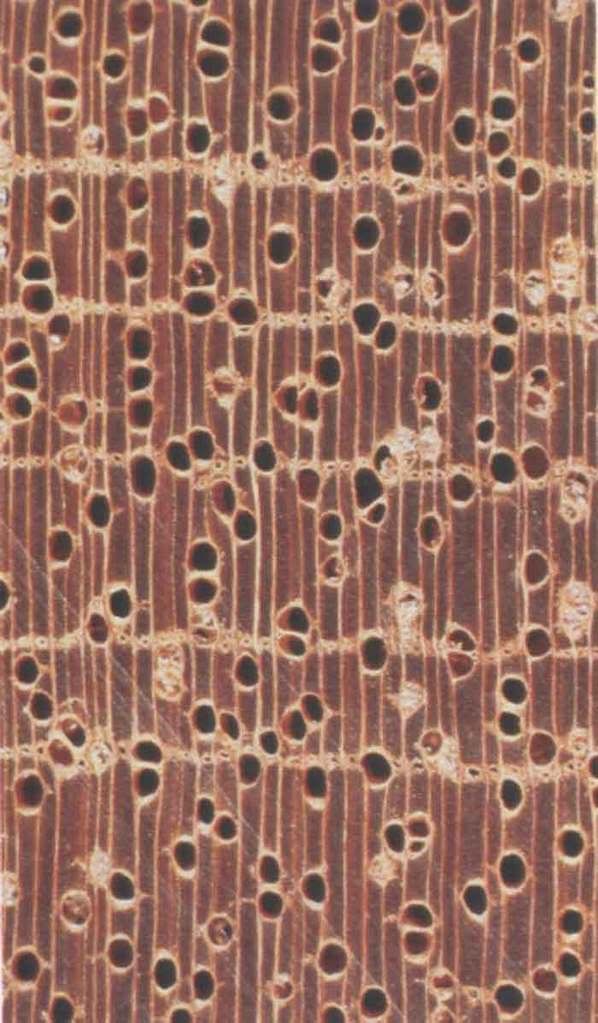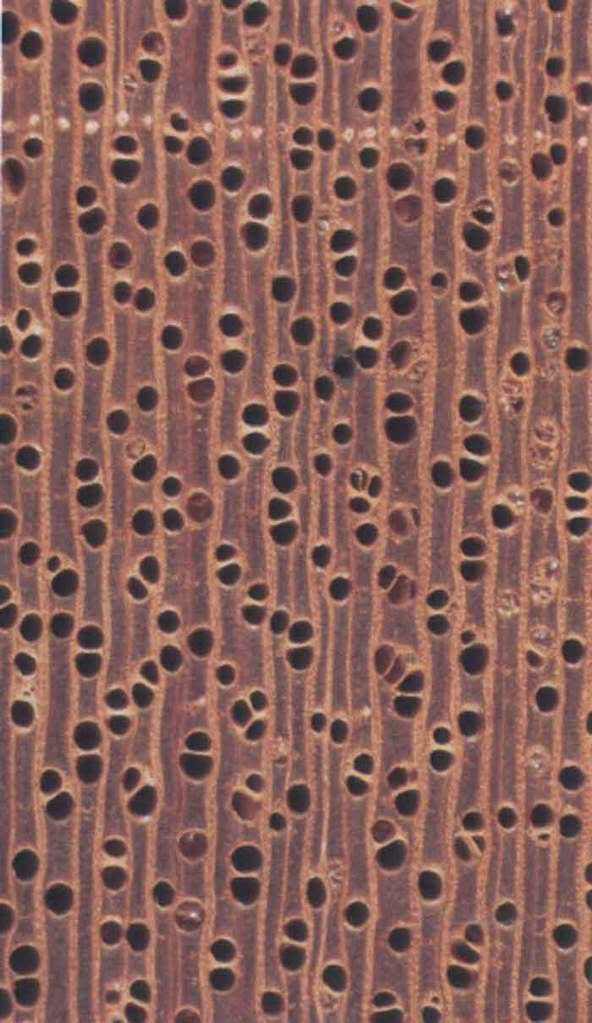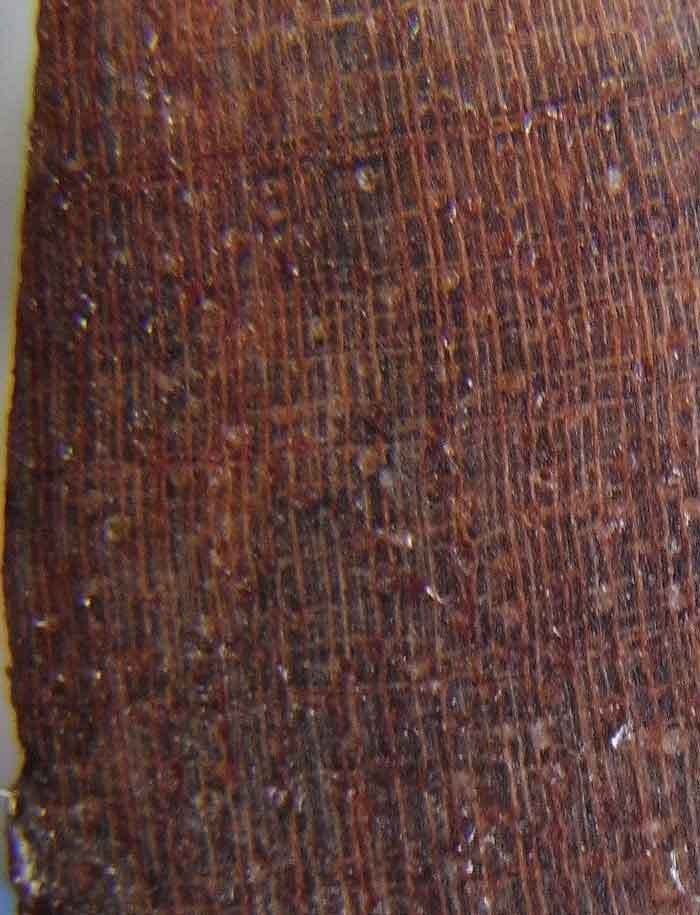As wood is from a tree and a tree is a plant, Im thinking this is the right forum to post this.
This has been sent to me from the Malaysia region, and Ive no idea whether its a native species, naturalised species, or if the wood was imported into the Malaysia region. If it was imported it might be something like Monkey Pod, which although is a native species of South American countries, I understand, has been naturalised in parts of India and Burma.
It has bands of interlocked growth rings. The growth rings are generally indistinct and few. It seems like a medium density hardwood, to me at least, with open pores on the straight cut sides of the block. Ive no idea if its sap wood, heart wood, or a combination of both with indistinct differences in density and/or colour. The overall colour is of a pale creamy-pink with occasional sreaks of grey where the medullary rays reach the surface of the block.
Straight cut grain:
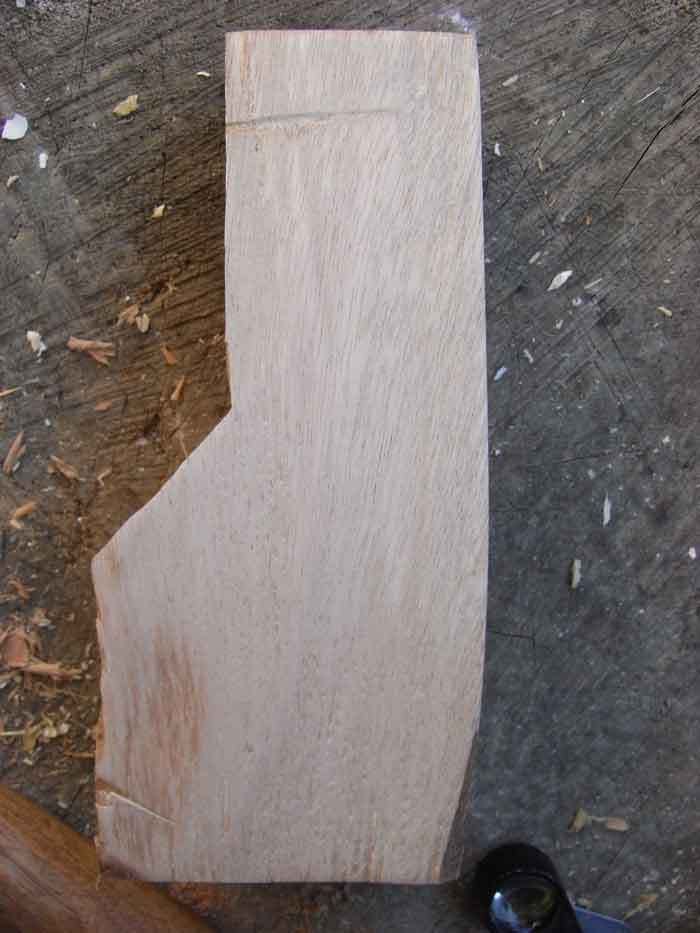
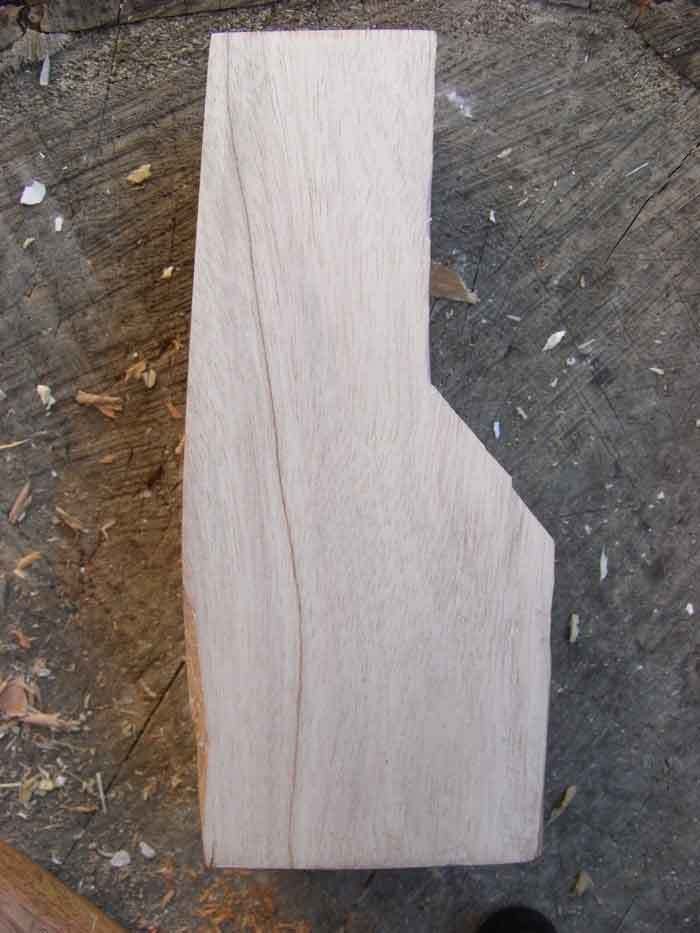
End grain showing growth rings such as they are, running diagonally top to bottom (only one really prominent), and grey rays (if thats what they are), running diagonally left to right. The interlocked grain is indicated by the torn fibres on the right of centre on the front vertical plane:
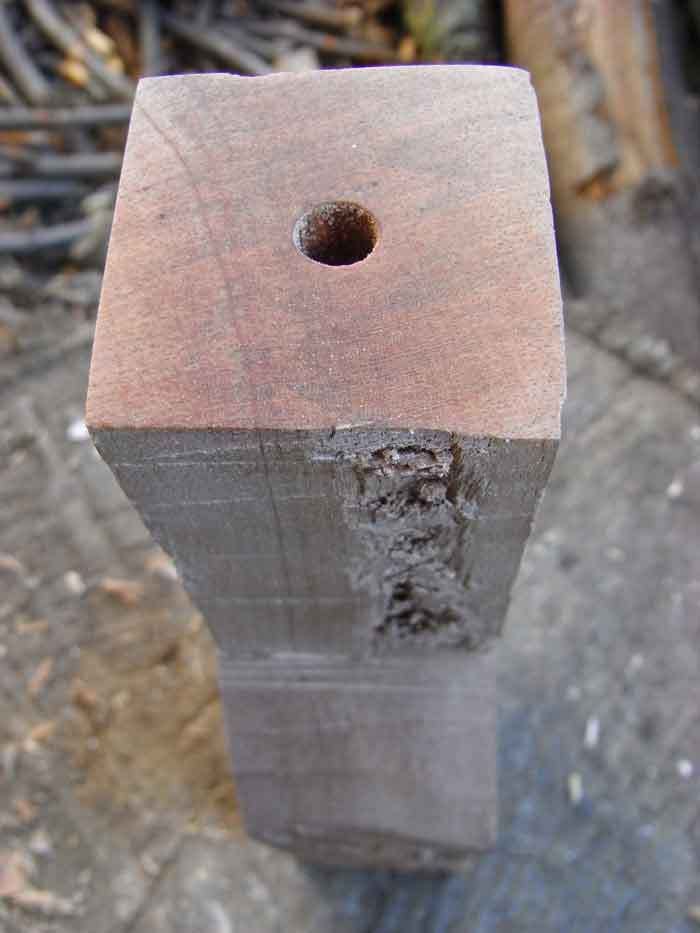
This is the better photo of the transverse cell structure I can do. The only major ring pores on the sample can be seen running diagonally right to left in the top section of the photo. The ring pores are arranged in a line of single pores. The rest of the pores seem to be arranged Diffuse and Solitary. If someone with experience of identifying species from transverse wood samples, would like more detail, I could try doing a drawing from observations with a hand lens, if that would help:
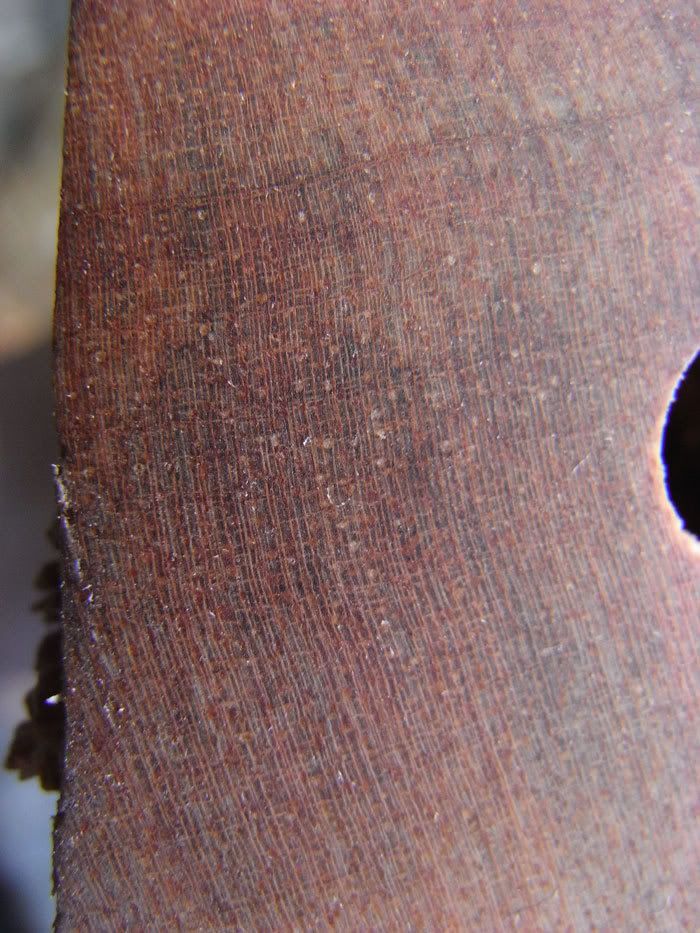
Heres hoping!
Best regards,
Paul.
This has been sent to me from the Malaysia region, and Ive no idea whether its a native species, naturalised species, or if the wood was imported into the Malaysia region. If it was imported it might be something like Monkey Pod, which although is a native species of South American countries, I understand, has been naturalised in parts of India and Burma.
It has bands of interlocked growth rings. The growth rings are generally indistinct and few. It seems like a medium density hardwood, to me at least, with open pores on the straight cut sides of the block. Ive no idea if its sap wood, heart wood, or a combination of both with indistinct differences in density and/or colour. The overall colour is of a pale creamy-pink with occasional sreaks of grey where the medullary rays reach the surface of the block.
Straight cut grain:


End grain showing growth rings such as they are, running diagonally top to bottom (only one really prominent), and grey rays (if thats what they are), running diagonally left to right. The interlocked grain is indicated by the torn fibres on the right of centre on the front vertical plane:

This is the better photo of the transverse cell structure I can do. The only major ring pores on the sample can be seen running diagonally right to left in the top section of the photo. The ring pores are arranged in a line of single pores. The rest of the pores seem to be arranged Diffuse and Solitary. If someone with experience of identifying species from transverse wood samples, would like more detail, I could try doing a drawing from observations with a hand lens, if that would help:

Heres hoping!
Best regards,
Paul.

